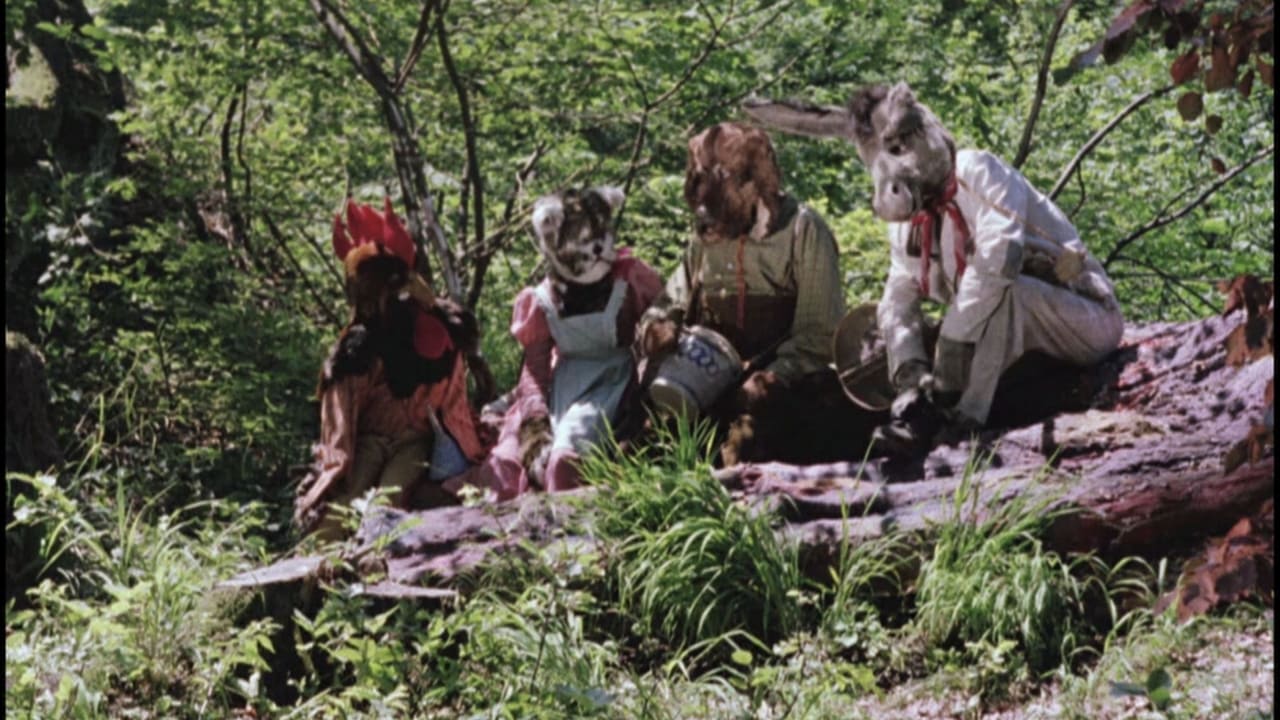

Hubert Schonger (who also did some nudist pictures) made another fairy-tale-to-screen transfer in 1959 with "Die Bremer Stadtmusikanten", directed by a certain Rainer Geis. The pictures all have some amateur charm, to say it nicely. This one, as a later attempt, is better than others. In his struggle for the young cinema goers, producer Schonger had to compete with Fritz Genschow, who also filmed a number of fairy tales in the 50's.Having actors dress up as the four leading characters (donkey, dog, cat and rooster) was the choice Schonger took (like in "Der Wolf und die sieben Geißlein"), and it was probably the best way to get around the problem of presenting animals alongside humans in the film. After all, in the Brothers Grimm fairy tale the animals represented human beings, too.The story has an old donkey resolving to break away from the unbearable hardships of working for a fat miller (Alfred Pongratz). By and by, he recruits three more unsatisfied animals and convinces them to accompany him on his way to Bremen where they want to become musicians. Fighting off some robbers in a forest house then becomes an important part of the story. Strangely, the well-known repeated phrase of the original, "Come along with us, something better than death can be found anywhere" (also appears in Käutner's "Der Hauptmann von Köpenick" of 1959) is not included in the film. The fairy tale's obvious social criticism, though, is rendered well enough, in particular in the persons of the miller and the farmer (Ludwig Schmid-Wildy, seemingly dubbed by Erik Jelde) who exploit their animals. The four robbers are portrayed as ridiculous as the original would have it.The filming is completely dated in today's world of special effects animation. Question is anyway, if fairy tales should be filmed at all (as they are part of an oral folk-lore). Competitors Schonger and Genschow chose to present them like this, knowing that they were no Walt Disneys. The risk of stealing something from the magic of a fairy tale t o l d to children is of course high. As a result, we have a routine product with some nice ideas but greatly lacking spirit and imagination.
... View MoreToo old fashioned fairy tale for children in which the four animals are played by dressed-up grown-ups. The mise-en-scene is adequate, but no more than that, thereby missing the chance to give it an enchanting atmosphere. Tricks are too obvious: when the rooster has to fly, the rope can hardly be missed to be seen! This one has not stand the time and probably only those children without too much experience in watching film and television shall be amused. I could not find any information on the director, but judging from this one he seems a competent amateur.
... View More